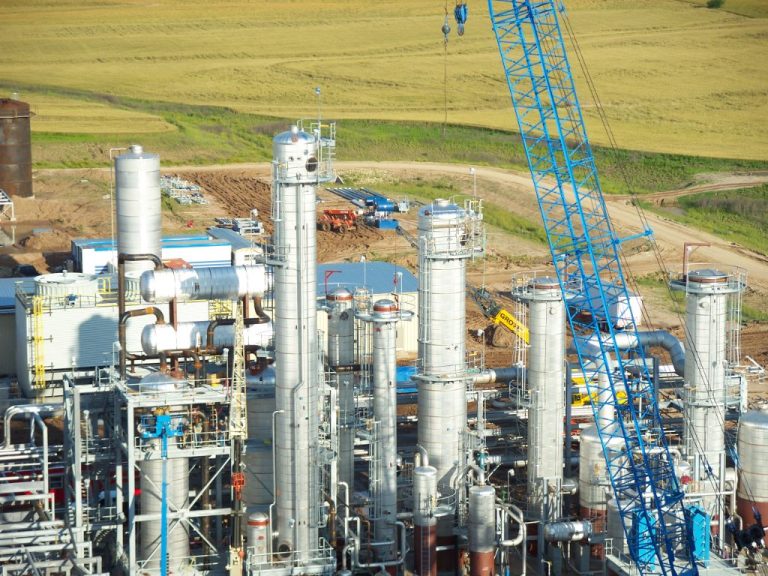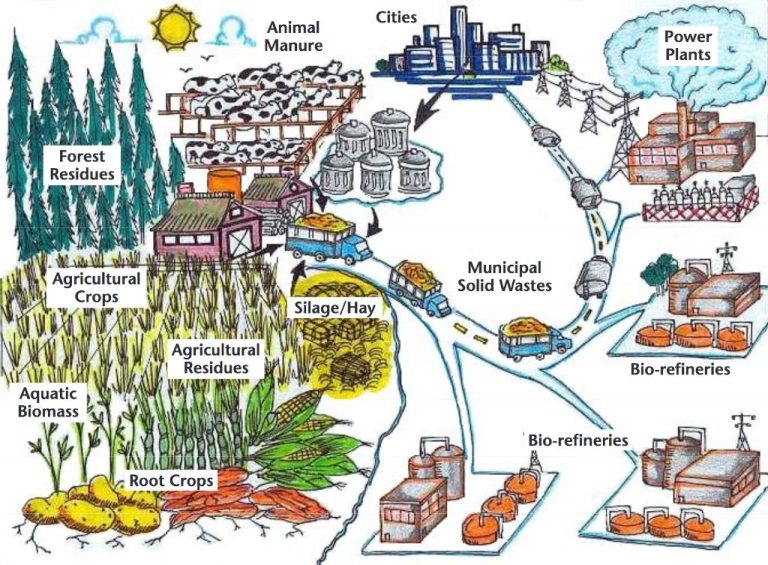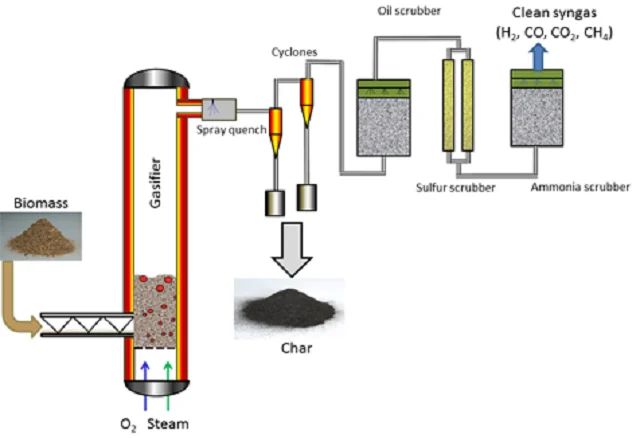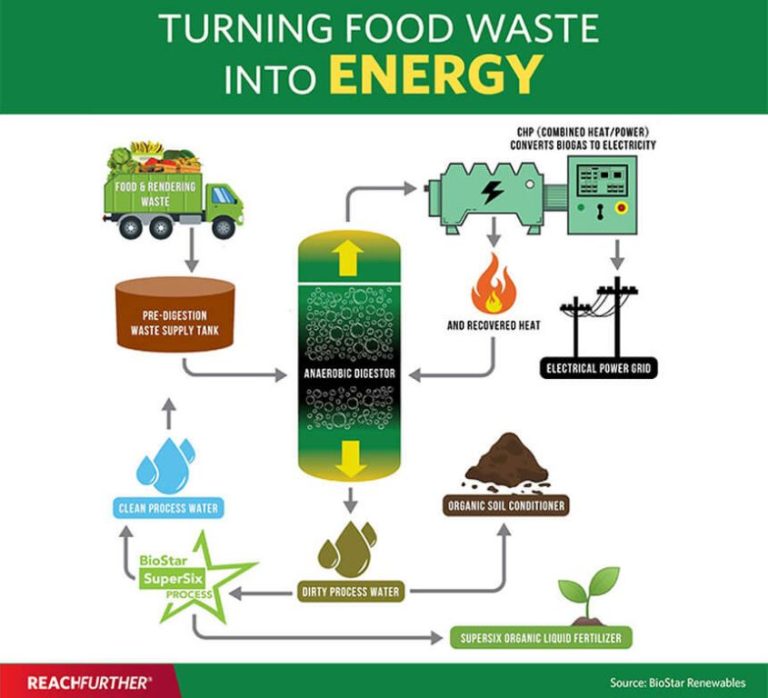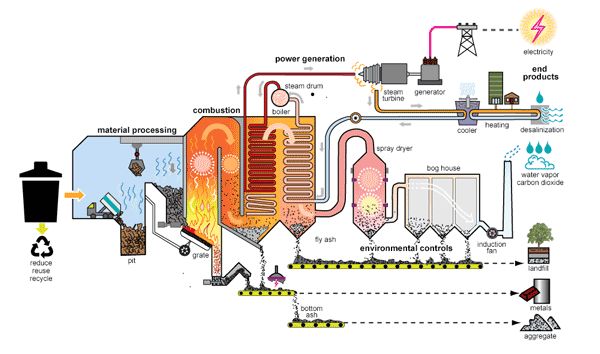Is Biomass And Bioenergy The Same Thing?
Biomass and bioenergy are related but distinct terms. Biomass refers to organic material that comes from plants and animals. It encompasses materials like wood, agricultural crops and waste, animal manure, and municipal solid waste. Biomass contains stored energy from the sun. When biomass is burned, the chemical energy is released as heat and can be used to generate electricity or power vehicles (https://www.researchgate.net/publication/344452463_Biomass_Pretreatment_and_Characterization_A_Review).
Bioenergy, on the other hand, refers specifically to renewable energy derived from biomass. It can take many forms like solid biomass, liquid fuels, biogas, and other renewable energy products that are derived from biomass feedstocks. Bioenergy is considered carbon neutral because the carbon dioxide released when biomass is burned is balanced by the carbon dioxide absorbed by plants during growth (https://www.pfpi.net/wp-content/uploads/2018/01/PFPI-comments-to-SASB-Jan-31-2018-1.pdf). The key difference is that biomass is the raw organic matter while bioenergy is the energy generated from biomass.
Difference Between Biomass and Bioenergy
While the terms biomass and bioenergy are sometimes used interchangeably, they refer to related but distinct concepts. Biomass simply refers to organic material that comes from plants and animals. This includes anything from trees and crops to manure and algae. Bioenergy, on the other hand, refers specifically to the energy generated from biomass. Simply put, bioenergy is the energy we get by burning biomass as fuel.
So biomass provides the raw material, while bioenergy is the end product. Biomass is considered a renewable energy source because we can always grow more trees and crops, replenishing the supply of biomass. When biomass is burnt to produce bioenergy, this energy can be used for heating, electricity generation, and transportation fuels. Examples of bioenergy include wood pellets burned for heating, biogas produced from animal manure, and bioethanol made from corn. Biomass provides a sustainable way to produce energy from organic sources that can regrow over relatively short time periods.
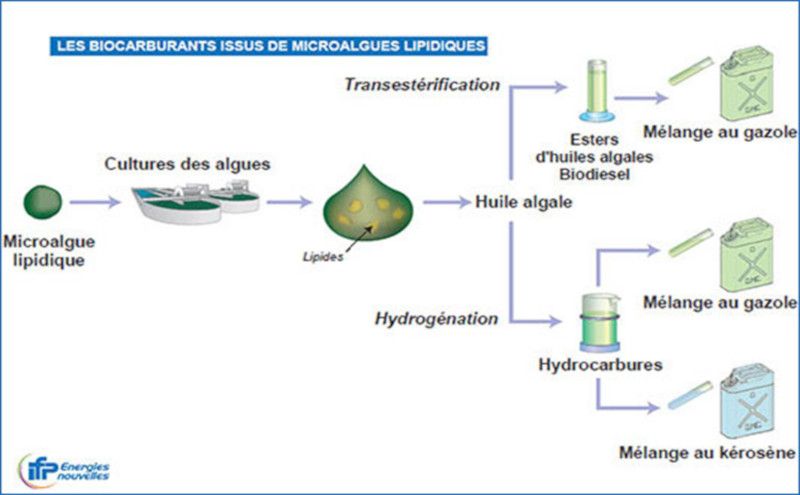
Types of Biomass
Biomass refers to organic matter that comes from plants and animals. It is a renewable energy source because the energy it contains comes from the sun. Plants absorb the sun’s energy through photosynthesis. When biomass is burned, the chemical energy stored in the plants is released as heat (1).
There are several major types of biomass (2):
- Plant materials – This includes trees, grasses, agricultural crops, and aquatic plants. Sources include forests, residues from lumber or paper mills, and excess agricultural residues.
- Agricultural waste – This includes manure and other agricultural waste streams. Manure can be used to produce biogas in anaerobic digesters.
- Wood and wood waste – This includes forest resources, logging residues, mill residues, black liquor from paper manufacturing, and construction and demolition wood waste.
- Biofuels – Biofuels are biomass sources that have been specifically grown for energy production, including corn, soybeans and other oil crops for biodiesel.
- Food, yard, and municipal waste – Organic waste from homes, yards, and businesses can be used as biomass. This is sometimes converted into biogas.
These diverse biomass resources can be used to produce electricity, transportation fuels, and chemicals. The type of biomass determines how it can be used.
(1) https://www.need.org/wp-content/uploads/2019/10/BiomassAtAGlance_11x17.pdf
(2) https://www.eia.gov/energyexplained/biomass/
Uses of Biomass
Biomass has a number of useful applications and is commonly used for several purposes:
Fuel – Biomass can be burned directly as a fuel or converted into liquid biofuels like ethanol and biodiesel. These fuels can be used for transportation, heating, and electricity generation.
Electricity – Biomass is burned to heat water, which produces steam to run turbines and generate electricity. Many power plants are configured to use biomass as a fuel source.
Heat – Biomass is a renewable and relatively clean source of heat. Wood pellets, chips and logs are burned in stoves and furnaces for heating homes, businesses, schools and industrial facilities.
Biogas – Bacteria and microbes can break down organic matter like manure and food waste anaerobically to produce a gas mixture called biogas. This can be purified into biomethane for heating and electricity.
Biofuels – Biomass resources can be converted into liquid transportation fuels like ethanol and biodiesel through processes like fermentation and transesterification.
Bioenergy Basics
Bioenergy refers to energy derived from biomass material such as plants and biological waste products (1). Biomass is converted into usable forms of bioenergy using various processes and technologies. The main forms of bioenergy include solid biomass, biogas, and liquid biofuels.
Solid biomass, such as firewood, charcoal, or wood pellets, can be burned directly for heating, cooking, and electricity generation. Biogas produced from decomposing organic materials can be used similarly to natural gas. Liquid biofuels like ethanol and biodiesel are used to power vehicles and machinery.
Bioenergy is considered a renewable form of energy because biomass can regrow over relatively short periods of time compared to the millions of years needed for fossil fuels. As plants grow, they absorb carbon dioxide from the atmosphere, which can make bioenergy carbon neutral or even carbon negative in some cases (2).
Overall, bioenergy allows stored solar energy in plants to be converted into usable energy sources that can displace fossil fuels. Bioenergy production is expected to increase in the coming decades as countries seek to decarbonize their energy systems.
(1) https://www.seai.ie/technologies/bioenergy/what-is-bioenergy/
(2) https://www.goodenergy.co.uk/what-is-bioenergy/
Forms of Bioenergy
Bioenergy comes in a variety of forms that can be used for electricity, heating, fuel, and more. Some of the main forms of bioenergy include:
Bioheat: Bioheat refers to biomass that is burned to generate heat for buildings or industrial processes. Sources of bioheat include wood, agricultural waste, and energy crops. Bioheat is often used to heat homes and businesses through district heating systems.
Biopower: Biopower involves burning biomass feedstocks to generate electricity. Biomass power plants convert the heat energy in biomass into mechanical power that runs a generator to produce electricity. Sources for biopower include forest residues, agricultural residues, and purpose-grown energy crops.
Biofuels: Biofuels are liquid fuels derived from biomass that can replace or supplement petroleum-based fuels like gasoline and diesel. Major types of biofuels include ethanol and biodiesel. Ethanol is made from starch and sugars in crops like corn and sugarcane, while biodiesel is produced from oils and fats like soybean oil. Biofuels can power vehicles and machinery.
Bioenergy Conversion Methods
There are several ways that biomass can be converted into useful bioenergy:
Combustion: This is the burning of solid biomass directly to produce heat and/or electricity. Some examples are burning wood chips, agricultural residues, and municipal solid waste in boilers to generate steam that drives turbines to produce electricity.
According to [1], combustion is the most proven and commercially ready option for converting biomass to energy.
Gasification: This process converts biomass into a combustible gas mixture by applying heat under pressure in the presence of a controlled amount of oxygen. The resulting “syngas” can then be used to generate electricity, produce fuels, or manufacture chemicals.
Gasification systems require specialized equipment and can achieve higher efficiencies than direct combustion [2].
Anaerobic digestion: Here, biomass is broken down by microorganisms in oxygen-free conditions to produce biogas containing methane and carbon dioxide. This biogas can be burned directly for heat and power or processed into vehicle fuels and natural gas substitutes.
Anaerobic digestion is commonly used for wet wastes like animal manure and food scraps.
Benefits of Bioenergy
Bioenergy offers several key benefits that make it an attractive renewable energy source. Some of the main advantages of bioenergy include:
Renewable – Bioenergy comes from organic materials such as plants, residues and waste which can be replenished naturally. This makes bioenergy a renewable source, unlike fossil fuels which take millions of years to form.
Reduces waste – Bioenergy provides a use for agricultural residues, forest debris, organic municipal solid waste and other types of biowaste that would otherwise end up in landfills. Converting these waste materials into useful energy reduces waste and emissions from decomposition.
Reduces emissions – Bioenergy can provide carbon neutral or even carbon negative energy when done sustainably. The carbon released during bioenergy generation is equal to or less than the carbon absorbed during plant growth. This results in lower net greenhouse gas emissions compared to fossil fuels.
Overall, bioenergy offers environmental benefits through renewable energy generation and waste reduction while also decreasing dependence on non-renewable fossil fuels. The renewability, waste minimization and lower emissions make bioenergy an eco-friendly energy choice.
Challenges of Bioenergy
While bioenergy has many benefits, there are also some challenges that need to be addressed. Three key challenges are cost, land use, and sustainability.
Cost is a major barrier to widespread adoption of bioenergy. Converting biomass feedstocks into usable energy forms requires substantial upfront investment in facilities and infrastructure. This leads to high production costs compared to fossil fuel energy (https://www.eubia.org/cms/wiki-biomass/biomass-resources/challenges-related-to-biomass/). Lack of financial incentives also hampers bioenergy growth.
Land use is another constraint. Vast areas of land are needed to grow energy crops, which competes with land for food production and natural habitats. Determining optimal land use for balancing food, fuel, and conservation needs is difficult (https://www.ncbi.nlm.nih.gov/pmc/articles/PMC8698859/). There are also challenges around sourcing sustainable supplies of biomass feedstock.
Sustainability issues pose challenges too. Some forms of bioenergy production have raised concerns around deforestation, biodiversity loss, soil depletion, and increased greenhouse gas emissions. More research is needed to develop sustainable practices and technologies (https://www.irena.org/News/expertinsights/2022/Sep/Five-cross-cutting-barriers-to-bioenergy-deployment-and-how-to-address-them).
Conclusion
In summary, while bioenergy utilizes biomass as a fuel source, biomass itself refers more broadly to organic materials from living or recently living organisms. Biomass encompasses a wide range of materials from plants, animals and microorganisms that can be used for purposes beyond just energy generation, like clothing, medicine, and building materials. Bioenergy focuses specifically on harnessing the stored chemical energy in biomass for renewable power and fuel production. It converts biomass sources like crops, waste, and algae into useful forms of energy. So while all bioenergy depends on biomass, not all biomass is used for bioenergy. The key difference lies in the intended end use – biomass has many applications beyond energy, while bioenergy extraction targets the conversion of biomass into utilizable power and fuel. Overall, bioenergy strategically leverages a subset of available biomass resources to provide renewable alternatives to fossil fuels.

